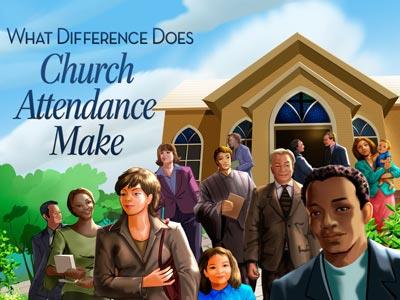-
"A Portrait Of The Church"
Contributed by Michael Luke on Nov 28, 2017 (message contributor)
Summary: As we begin the New Year, our congregation needs to seek to further our work to be like the church described in the New Testament.
“PORTRAIT OF THE CHURCH”
1 PETER 2:4-10
OPEN
On the wall near the main entrance to The Alamo in San Antonio, TX is a portrait with the following inscription: James Butler Bonham – no picture of him exists. This portrait is of his nephew, Major James Bonham, deceased, who greatly resembled his uncle. It is placed here by the family that people may know the appearance of the man who died for freedom.
When we look at First Christian Church, Martinsville, IL as we get ready for the year 2010, how much can we say it resembles the 1st century church? Our congregation belongs to a movement that began in the early 1800’s called the Restoration Movement. One of the steps taken to restore the church was to do away with denominational names. Those who identified themselves with this movement took down any denominational name and adopted a New Testament name such as Christian church or church of Christ.
The fact that the sign on the outside of this building announces us to the community as First Christian Church tells other that we claim to be part of that movement. How are we doing?
In this morning’s message, we’re going to look at a few “word pictures” painted by the inspiration of the Holy Spirit through the work of the Apostle Peter. 1 Pet. 2:4-10 – “As you come to him, the living Stone—rejected by men but chosen by God and precious to him— you also, like living stones, are being built into a spiritual house to be a holy priesthood, offering spiritual sacrifices acceptable to God through Jesus Christ. For in Scripture it says: ‘See, I lay a stone in Zion, a chosen and precious cornerstone, and the one who trusts in him will never be put to shame.’ Now to you who believe, this stone is precious. But to those who do not believe, ‘The stone the builders rejected has become the capstone,’ and, ‘A stone that causes men to stumble and a rock that makes them fall.’ They stumble because they disobey the message—which is also what they were destined for. But you are a chosen people, a royal priesthood, a holy nation, a people belonging to God, that you may declare the praises of him who called you out of darkness into his wonderful light. Once you were not a people, but now you are the people of God; once you had not received mercy, but now you have received mercy.”
There are three word pictures that I want us to focus on this morning. Let’s seriously look at how we compare to the portrait of the church painted here in this passage and talk about some things we need to do to look like the portrait of the church Peter paints in this passage.
A SPIRITUAL HOUSE
1 Pet. 2:5 – “…you also, like living stones, are being built into a spiritual house to be a holy priesthood, offering spiritual sacrifices acceptable to God through Jesus Christ.”
What do you immediately think about when I say the word “church”? I’m sure that many of us automatically picture some sort of building. It could be made of brick, wood, stone, or even metal but most of us automatically see the picture of some sort of building in our mind’s eye.
However, the Bible is very clear that God cannot be contained in a physical building made by the hands of human beings. When Solomon dedicated the first Temple to the one and only true God, he said in 1 Kings 8:27 – “But will God really dwell on earth? The heavens, even the highest heaven, cannot contain you. How much less this temple I have built!” Stephen was on trial before the Jewish ruling council for preaching Jesus and in Acts 7:48 he said, “…the Most High does not live in houses made by men.” The apostle Paul, preaching in Athens said in Acts 17:24 – “The God who made the world and everything in it is the Lord of heaven and earth and doest not live in temples built by hands.”
The church is not a physical building but a spiritual building. Peter calls us “living stones” that gets built into a “spiritual house”. Now, Peter uses some interesting language in this section of our passage this morning. In fact, he uses contradictory language. He uses what is termed in the study of literature as a “paradox.” A “paradox” is something that seems contradictory or even absurd but is true. Examples would be “jumbo shrimp” or “military intelligence”. It’s also known as an oxymoron which comes from the Greek words meaning “sharp/dull”.
What is the paradox that Peter uses here? He calls those of us who have come to know Christ as Lord and Savior “living stones”. We usually use the term “stone” with the word “dead”. We refer so something as being

 Sermon Central
Sermon Central



